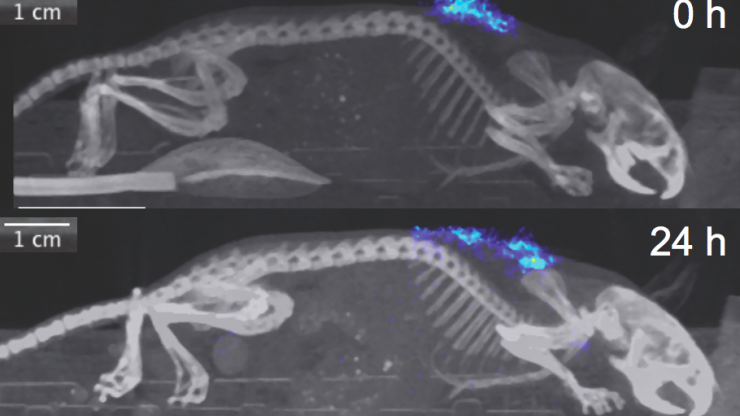Hundreds of millions of people around the globe suffer from diabetes. Forced to constantly monitor their glucose levels and deliver insulin injections often twice a day, the hunt is on to find a controlled release mechanism that would result in a single monthly injection. A team of biomedical engineers may have finally found the answer with a new biopolymer solution.
A common treatment for those with type 2 diabetes involves the use of a molecule called glucagon-like peptide-1 (GLP1). This molecule causes the pancreas to release insulin, but it also has a short half-life and disappears from the body rather quickly. In developing a longer lasting treatment involving GLP1 researchers faced two problems – first, they needed to find a compound to bind GLP1 to make it last longer in the body, and second, they needed to develop a way to control the rate of the molecule's release.
A team at Duke University solved both problems by developing a heat-sensitive elastin-like polypeptide that can fuse with GLP1. Once injected into the skin the solution responds to body heat, forming a gel-like "depot." This reservoir of medication is then slowly released into the body as it dissolves.

Early animal tests show that a single injection can regulate glucose levels in mice for up to 10 days and rhesus monkeys for more than 14 days. The drug was also found to be administered at a constant rate through the duration of the trial. The team believes these results from the animal tests bode well for future translation into human subjects.
"Because our metabolism is slower than monkeys and mice, the treatment should theoretically last even longer in humans," says co-author of the study, PhD student Kelli Luginbuhl, "so our hope is that this will be the first bi-weekly or once-a-month formulation for people with type 2 diabetes."
The biopolymer developed by the team could have wider applications beyond the treatment of diabetes. A precise controlled release system such as this would be enormously useful in delivering a variety of sustained, long-acting pain medications, for example.
The team still needs to undertake more clinical work before moving into human trials, but the technology offers an exciting new path towards long-acting controlled release medication delivery.
The new technology was published in the journal Nature Biomedical Engineering.
Source: Duke University





